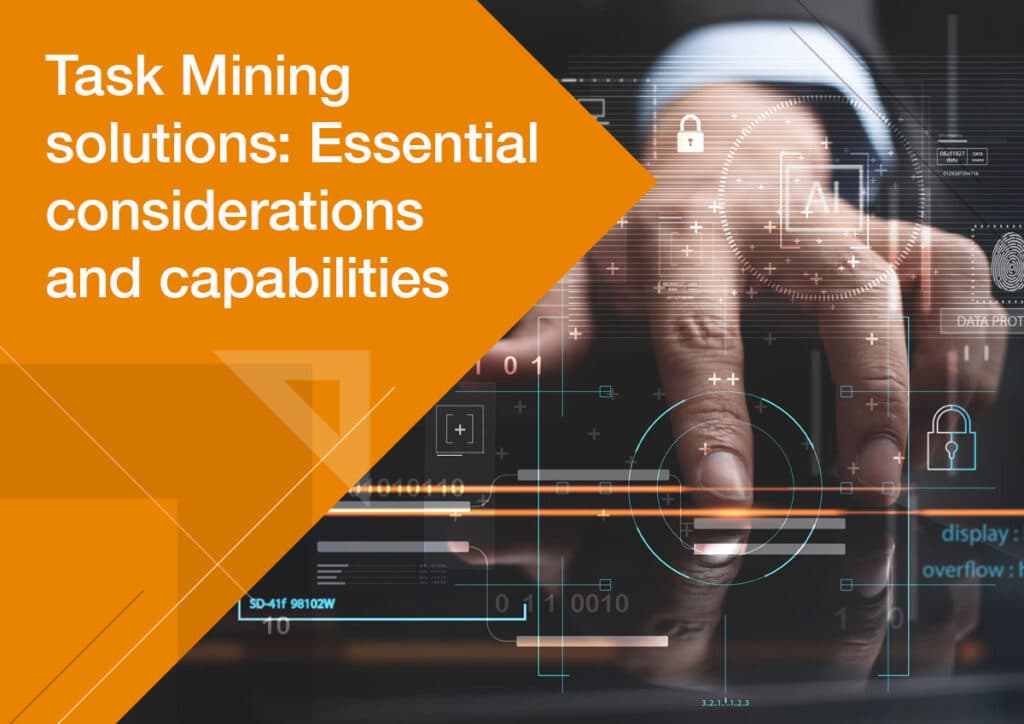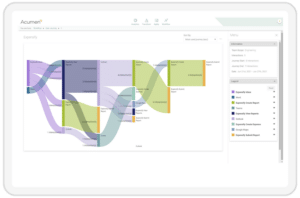What is Task Mining? Exploring the Efficiency-Boosting Technology for Organizational Transformation
-
June 5, 2023
- Posted by: Mark Cresswell

Task Mining technology is being adopted rapidly by organizations wishing to improve the efficiency with which their most important assets…humans, interact with technology.
Task Mining entails instrumenting the interactions employees have with technology with the granularity and reliability. Which is necessary to gain actionable insights on how to improve those interactions and ultimately business efficiency
With Task Mining increasing in popularity as a critical component of an organization’s digital transformation armoury, it’s important to develop an understanding of what separates the various Task Mining solutions.
Table Stakes for Instrumentation
The biggest obstacle to the successful implementation is privacy. Almost by definition the instrumentation has the potential to raise privacy concerns. Task mining concerns itself with analysing what people are doing on their computing devices.
Techniques exist that will minimise any such concerns among security professionals who have an open mind.
Everything from obfuscation of high-value interaction patterns, through delegated analysis rights to user anonymity. Unless a Task Mining tool has a well-considered approach to privacy, its utility will be impaired by adoption barriers.
With privacy dealt with, how do the best Task Mining tools differentiate themselves?
Data Fidelity
“You don’t know what you don’t know” is a saying that could have been written for Task Mining. Many tools require specific definition of the task activity to be analysed; the aim being to optimize the steps in a process by analysing the logs of the known components of the process.
Such methods fail to catch ad-hoc user-activity, which in the user’s mind are genuine parts of the process but use unanticipated facilities. We’ve seen formalized mortgage application processes that incorporate stand-alone spreadsheet activity. Such activity was a complete surprise to the team responsible for optimizing the mortgage process. To be effective task-mining must instrument everything a user does from the start point of a process to its end point.
Environment Context
Desktops and laptops can be fickle beasts. End-user behaviour can be sensitive to environment issues like application slowdowns, freezes etc.
We’ve all been there. While trying to do something mundane, a “spinning beachball of doom” or “interminable hourglass”, has us searching for an alternative. Capturing these endpoint issues helps improve the employee experience and can explain certain process deviations.
With the right data it can also identify endpoint configuration issues that may prove to be the root cause of task efficiency challenges.
Use-Case Adaptability
Task mining provides a range of benefits to an organization, and users who have very different requirements. The following list is far from exhaustive, and is designed to illustrate the range of use-cases to which Task Mining can be applied:
Integration with Automation
Streamlining the gathering of raw interaction data and decisions that can form the basis of automation projects. Representing such information in a form that can be consumed by Robotic Process Automation (RPA) projects is critical.
Employee Training & Efficiency
By highlighting various journeys employees take through applications to achieve a particular outcome, opportunities arise to make the organization more efficient.
Endpoint Degradation Analysis
Often employees will deviate from a standard journey due to localized background issues. If such a deviation can be correlated with the root cause of the issue the correct remediation is more likely. This kind of analysis requires a level of instrumentation at the endpoint that is not possible with more conventional screen-oriented task mining tools.
The telemetry required includes details of concurrently active tasks, resource constraints, crash detection and other system-level items not visible at the screen.
Cross-sell
Customer facing employees are often provided with opportunities to cross-sell additional goods and services. The correct visualization of the user-journey, for the commercially oriented, can yield real opportunities to grow revenue.
Software Portfolio Rationalization
Task mining can reveal opportunities to streamline the software configuration of user’s workstations. It common for, sometimes expensive, tools, to be deployed that are either not used at all, or used in a way that can be replaced by something less expensive or eliminated entirely highlighting significant ROI opportunity for projects.
Direct Telemetry Access
Not every use-case can be anticipated, which is why the best tools provide APIs that enable easy and direct access to the captured information. This feature enables existing data science platforms to be populated with task mining telemetry and analysed with existing processes and BI tools.
Telemetry Efficiency
While the breadth and utility of the captured data is vital, unless it’s captured efficiently, reliably and at scale, it will not support the desired outcomes. Event-driven capture of everything necessary to support the use-cases generates a lot of telemetry data. The capture and transmission of the telemetry cannot be allowed to contribute to any workstation inefficiency or stability.
Conclusion
Task Mining is rapidly becoming an essential tool in the kit bag of any organization undertaking digital transformation. The rush to deploy however must not be at the expense of making sound choices. Task Mining tools are far from commodity status. The variance in suitability can have a material impact on the project outcome. Varying from reducing costs to improving workflows.
